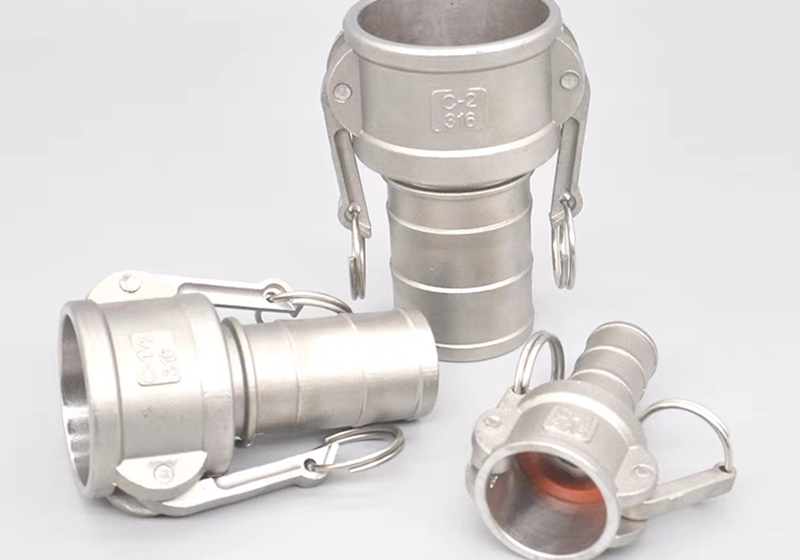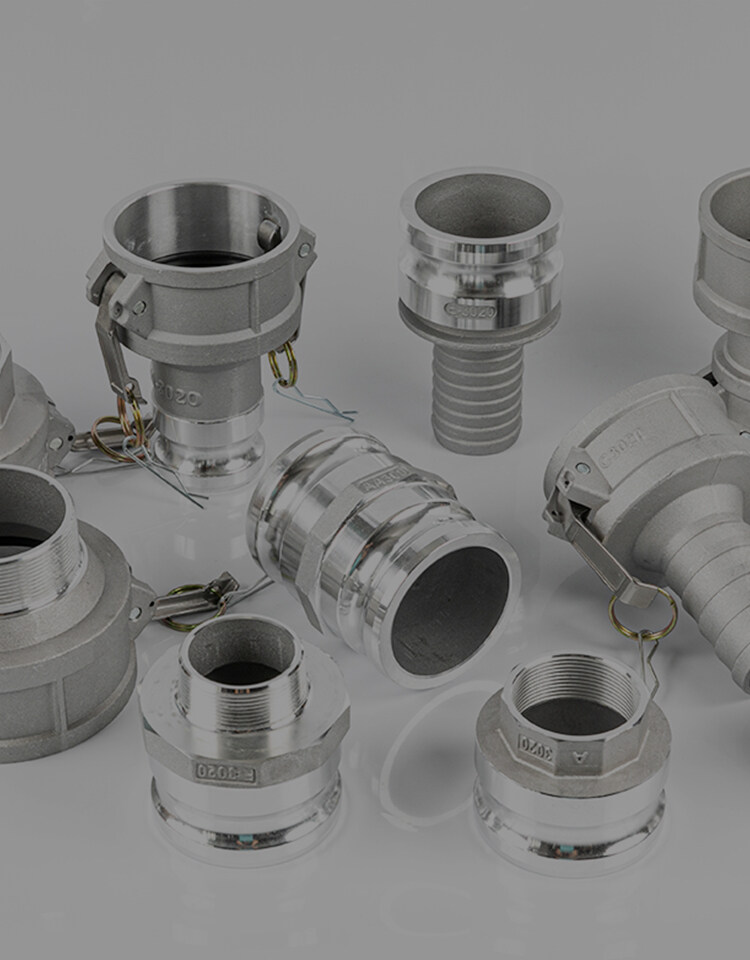Error de formato de correo electrónico
emailCannotEmpty
emailDoesExist
pwdLetterLimtTip
inconsistentPwd
pwdLetterLimtTip
inconsistentPwd

Noticias
Aquí, puedes describir un texto que quieres expresar

Hydraulic Hose Repair Coupling: Ensuring Efficient and Reliable Connections
In any hydraulic system, the proper functioning of hoses is crucial for the overall performance and safety. A hydraulic hose repair coupling plays a vital role in maintaining the integrity of the system by providing a reliable connection between hoses. In this blog post, we will explore the importance of hydraulic hose repair couplings and discuss various types of couplings commonly used in different applications.
Understanding Hydraulic Hose Repair Couplings
1.1 What is a Hydraulic Hose Repair Coupling?
A hydraulic hose repair coupling is a device used to connect two hydraulic hoses together, allowing for the seamless flow of hydraulic fluid between them. It is designed to withstand high pressure and ensure a leak-free connection. These couplings are typically made of durable materials such as stainless steel or brass to withstand the harsh conditions often encountered in hydraulic systems.
1.2 Importance of Hydraulic Hose Repair Couplings
The couplings are essential for maintaining the integrity of hydraulic systems. They provide a secure connection between hoses, preventing leaks and ensuring the efficient transfer of hydraulic fluid. Without proper couplings, hoses may become disconnected, leading to fluid loss, decreased system performance, and potential safety hazards.
1.3 Factors to Consider When Choosing a Hydraulic Hose Repair Coupling
When selecting a hydraulic hose repair coupling, several factors should be taken into consideration:
Pressure rating: The coupling should be able to withstand the maximum pressure of the hydraulic system to ensure a safe and reliable connection.
Hose compatibility: The coupling should be compatible with the type and size of the hydraulic hoses being connected.
Material: The material of the coupling should be chosen based on the specific application and the environment in which it will be used.
Ease of installation: The coupling should be easy to install and remove, allowing for quick repairs or replacements when necessary.
Types of Hydraulic Hose Repair Couplings
2.1 Fire Hose Coupling Male Female
Fire hose couplings male female are commonly used in firefighting applications. They are designed to connect fire hoses to water sources or other firefighting equipment. The male and female couplings ensure a secure connection, allowing for the efficient flow of water during firefighting operations.
2.2 Fire Hose Male Female Coupling
Similar to the coupling male female, the fire hose male female coupling is specifically designed for firefighting applications. It provides a reliable connection between fire hoses, ensuring the efficient flow of water to extinguish fires.
2.3 Female Garden Hose Coupler
The female garden hose coupler is a type of hydraulic hose repair coupling commonly used in residential and commercial gardening applications. It allows for the connection of garden hoses to faucets or other watering equipment, ensuring a leak-free connection and efficient water flow.
2.4 Female to Female Hose Coupler
The female to female hose coupler is a versatile coupling that allows for the connection of two hydraulic hoses with female ends. It is commonly used in various industrial applications where the extension or repair of hydraulic hoses is required.
2.5 Female Coupling for Hose
The female coupling for hose is a general term used to describe couplings that have a female end for connecting to hydraulic hoses. These couplings come in various sizes and configurations to accommodate different hose types and applications.
Advantages of Using Hydraulic Hose Repair Couplings
3.1 Easy and Quick Installation
The couplings are designed for easy and quick installation. They often feature a simple push-to-connect or threaded design, allowing for hassle-free repairs or replacements in the field. This saves valuable time and minimizes downtime in hydraulic systems.
3.2 Enhanced System Flexibility
By using the couplings, hydraulic systems can be easily modified or extended to meet changing requirements. Couplings allow for the connection of different lengths or types of hoses, providing flexibility in system design and layout.
3.3 Improved System Efficiency
A reliable connection provided by the couplings ensures the efficient flow of hydraulic fluid within the system. This minimizes pressure drops and energy losses, resulting in improved overall system efficiency and performance.
3.4 Cost-Effective Solution
The couplings offer a cost-effective solution for repairing or extending hydraulic hoses. Instead of replacing the entire hose, damaged sections can be cut and replaced with couplings, saving both time and money.
Common Applications of Hydraulic Hose Repair Couplings
4.1 Construction Industry
In the construction industry, hydraulic systems are widely used in heavy machinery such as excavators, loaders, and cranes. The couplings are essential for maintaining the integrity of these systems, ensuring reliable connections and efficient operation.
4.2 Agriculture Sector
Hydraulic systems play a crucial role in agricultural machinery, including tractors, harvesters, and irrigation systems. The couplings are used to connect hoses in these systems, allowing for the efficient transfer of hydraulic fluid and precise control of agricultural equipment.
4.3 Manufacturing and Industrial Applications
Hydraulic systems are extensively used in manufacturing and industrial applications, such as machine tools, presses, and material handling equipment. The couplings are vital for maintaining the performance and reliability of these systems, ensuring uninterrupted operation and minimizing downtime.
4.4 Automotive Industry
Hydraulic systems are commonly found in various automotive applications, including braking systems, power steering, and suspension systems. They are used to connect hoses in these systems, ensuring safe and efficient operation of vehicles.
4.5 Mining and Exploration
In the mining and exploration industry, hydraulic systems are used in heavy machinery and equipment for drilling, excavation, and material handling. They are critical for maintaining the integrity of these systems, ensuring reliable connections and efficient operation in harsh mining environments.
Proper Maintenance and Care for Hydraulic Hose Repair Couplings
5.1 Regular Inspection and Testing
Regular inspection and testing of the couplings are essential to identify any signs of wear, damage, or leaks. This helps prevent potential failures and ensures the continued reliability of the hydraulic system.
5.2 Proper Cleaning and Lubrication
The couplings should be cleaned and lubricated regularly to prevent the buildup of dirt, debris, or corrosion. This helps maintain the smooth operation of the couplings and extends their lifespan.
5.3 Replacement of Damaged or Worn-Out Couplings
If a coupling shows signs of damage or wear, it should be replaced immediately to prevent leaks or failures. Regularly inspecting the couplings and replacing them when necessary ensures the continued reliability of the hydraulic system.
5.4 Training and Education for Operators
Proper training and education for operators are crucial to ensure the correct installation and maintenance. Operators should be familiar with the proper procedures and safety guidelines to prevent accidents and ensure the optimal performance of the hydraulic system.
Conclusion
In conclusion, hydraulic hose repair couplings are essential components in any hydraulic system. They ensure efficient and reliable connections between hoses, contributing to the overall performance and safety of the system. By understanding the different types of couplings available and their applications, users can make informed decisions when selecting the most suitable coupling for their specific needs. Regular maintenance and care are also crucial to prolong the lifespan of the couplings and ensure optimal performance. With proper installation, maintenance, and care, hydraulic hose repair couplings can provide long-lasting and dependable connections in various industries and applications.

